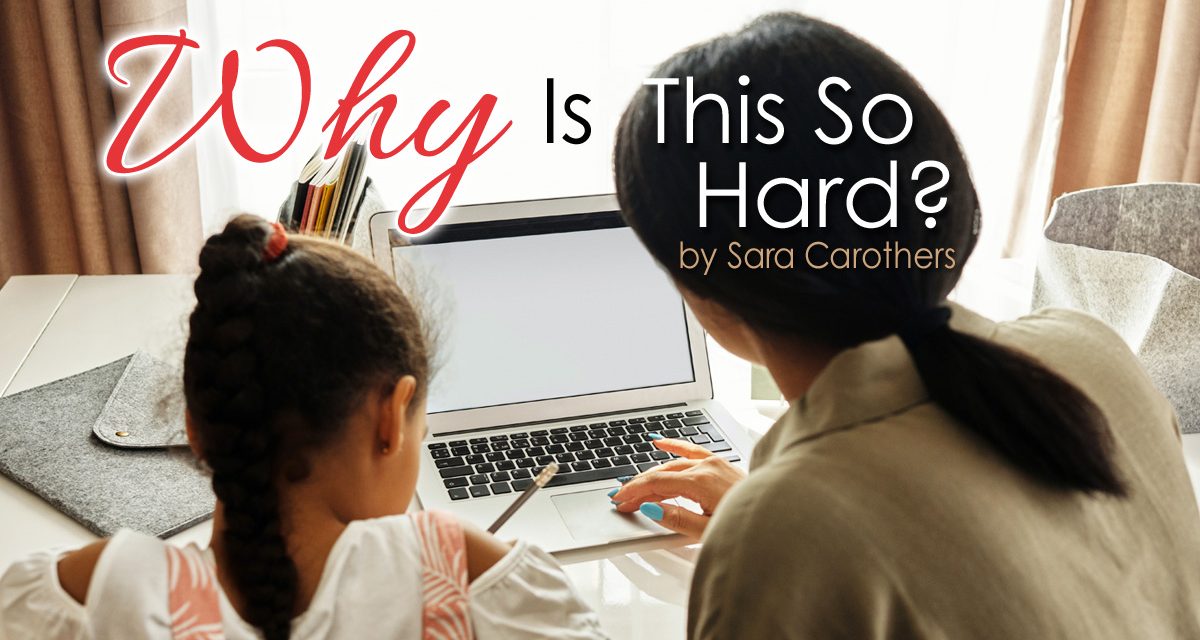Pandemic parenting is wrought with challenges: keeping masks on, social distancing, hand-washing, and determining if your children will be safe at their school where they have friends and a formerly predictable routine. In addition, parents are often facing something else they didn’t plan on – the need to homeschool.
In September, the Rainbow Resource consultant team was introduced to a new clientele: parents who liked their local schools and had given the online learning with classroom teachers a try. I imagine there are plenty of kids and parents doing fine with this concept; yet there were parents who found unexpected challenges, like their child sitting at a screen for three hours or more, visually withering at the lack of interaction, and having to re-learn an entire lesson on a regular basis. In most cases, these were the parents contacting us in order to learn more about homeschooling options.
I mean, if you are going to teach your child, you might as well have the educational resources at hand to be as self-sufficient as possible. This goal, however, presents a whole new range of issues and concerns. This new wave of homeschool parents, after all, are commonly choosing curriculum used by public schools, except they don’t have everything a classroom teacher has when their school district buys this stuff, and that can be quite unsettling.
Classroom materials are made for use in the classroom. It sounds obvious, but that is the primary reason why most homeschool parents determine to use alternative curriculum materials that are more user friendly. Traditional curriculum materials typically include loads of assessments and a host of features that are designed to accommodate a variety of learners. This places a burden upon parent educators to have to adapt these materials to suit teaching just one child. That is a big jump. Many inexperienced home educators initially think, the teacher did this-or-that so I must have to do that too, right?
Parents often choose traditional classroom materials because they align to Common Core State Standards, NextGen Science Standards, or their specific state standards. They want assurance that if they only do this homeschool gig for one year, returning to the next grade level at their local school will be as seamless as possible.
There are so many flaws to this short-sighted thinking, it is hard to know where to start. 1. You are assuming the students doing school online will slide right into the next grade. Really? Is every student in that zoom meeting being retaught those lessons like you did? Teachers have to know this on some level – next year will be a hot mess. 2. You are choosing the most unsuitably formatted materials you possibly could. There are amazing curriculum options actually designed for homeschooling. 3. You are limiting yourself and you don’t even know it. By trying to recreate the classroom at home, you are missing out on many of the primary benefits of homeschooling.
So what can you do to make this less hard? Let go of the rigid scheduling restraints. Do your math and language arts 5 days a week. Science and social studies can each be done 2-4 days a week. Combine kids for science and social studies – do the same topics, but create projects that correspond to their actual learning levels. Always teach to the oldest child when you instruct students in a group, the younger pupils will see this text material again. Read books aloud together, do science experiments in the kitchen, play outside and call it recess. Take breaks when you see your child needs one. Got a wiggly one that can’t focus? Get a jump rope or chase the dog around the yard.
What about enrichment? Are you kidding me? This is the fun part! Art, music, and languages are easier to ‘teach’ than you might think. This is freestyle time, let the interests of your students lead the way. Imagination happens in the quiet moments of play. Inspiration comes as you read a story together. Focus on locating quality texts and supplies, and then stay out of the way and don’t try to micromanage every detail. Find the right combination of structure and predictability, and take advantage of the freedom and flexibility that home teaching naturally provides each individual child.
If you only do this for a year, make it memorable in a good way. “Hey Mom, remember when we made a cardboard castle-fort and read books about knights inside?” You don’t have to be Super-Mom or Dad to do this, just create an environment where learning is interactive and meaningful. True learning and education grow best within an environment that goes way beyond the confines of a sterile computer screen.
You can meet those grade level standards in a variety of ways. Be open to other materials. Don’t try to recreate a classroom. And finally, listen to what your children are telling you. Do you see them thriving? Reading? Creating? Building? Experimenting? Being curious? If yes, they will be prepared for the classroom next year. And if you change your mind and decide to homeschool over the long haul, call us to learn more!


![Teacher Reboot: Retreat! [Part 2]](https://ourhomeschoolforum.com/wp/wp-content/uploads/2016/08/teacher-reboot-2-440x264.jpg)


